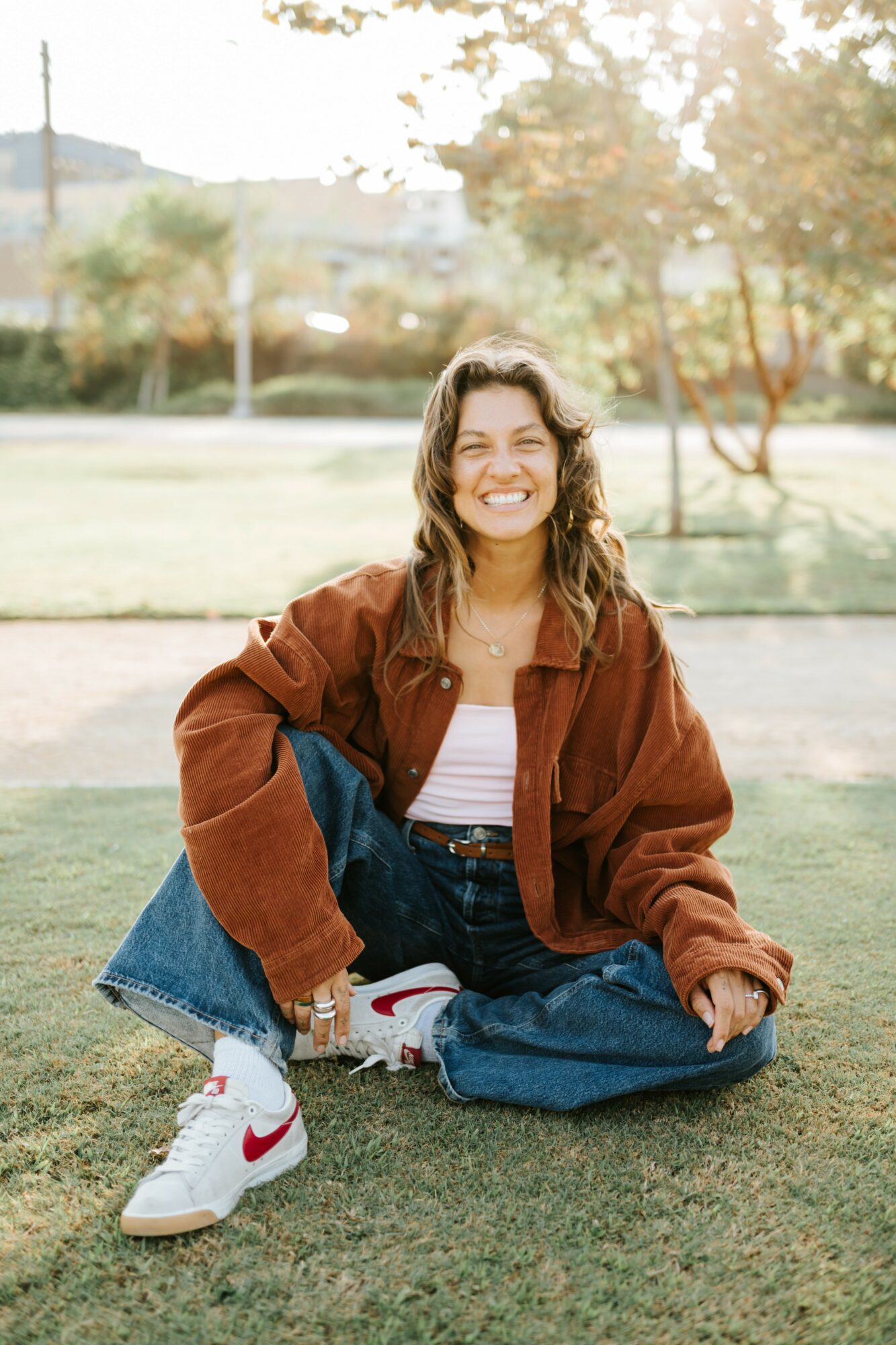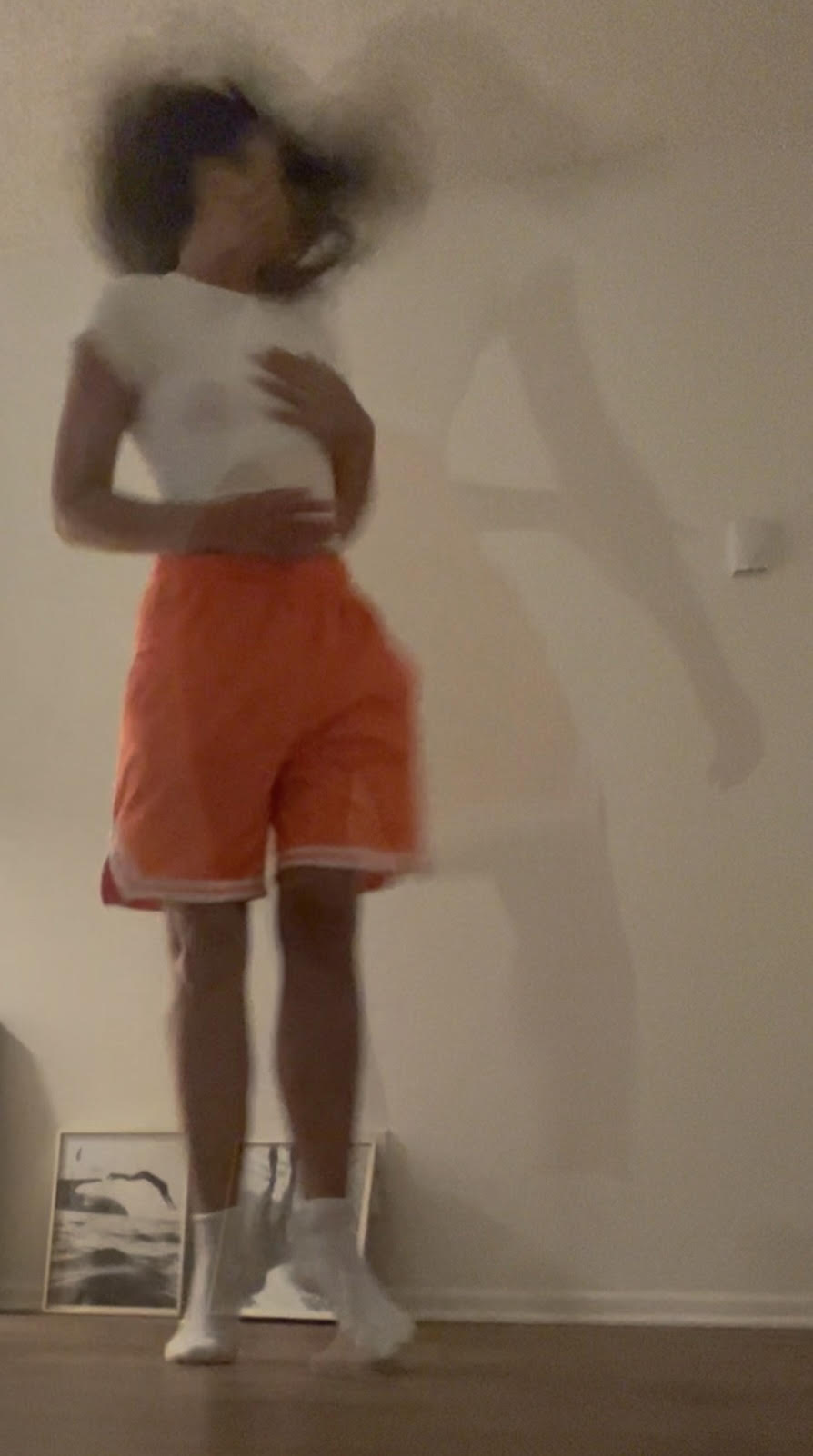

Today we’d like to introduce you to Danielle Wiggins.
Hi Danielle, so excited to have you with us today. What can you tell us about your story?
I did not expect or plan to become a therapist. I came to this work through the body. I’ve been in movement spaces since I was tiny, with dance being my first language of healing. It helped me survive being a little human in the world, offered a container for my early trauma and taught me how to express what I couldn’t yet say as a child of divorce. Later, yoga and meditation supported me through the sleepless nights, hustle, and burnout that so many of us know all too well from doing the corporate life dance and navigating the beautiful, gnarly aliveness and overstimulation of city living.
Somatic movement became a lifeline when I was diagnosed with Graves’ disease in my early 30s. It felt like a swing back toward the little girl in me, allowing for so many flavors of movement and stillness; more fluid movement, permission to paint outside the lines, a deeply primal connection to myself and those who came before me, and freedom to express what was true in the present moment, without someone directing me or offering a template to follow.
For over a decade, I’ve studied yoga, meditation, breathwork, and energy — not as professional tools at first, but as ways to survive, soften, and reconnect with my own life force. I eventually left the corporate world and backpacked through Southeast Asia, twice, over a year’s time, soaking in teachings, culture, and the radical idea of pause. I taught and shared these practices in hostels and yoga shalas in exchange for room and community. That time gave me space. Space to slow down, study presence, and explore what arises when we release the sense of urgency. I always say that the more I learn, the less I know. But one thing I feel confident in is this: in a world that moves so fast, slowing down is drastic, confronting, terrifying, and one of the most liberating and rebellious things a human can do. That is what my work is now centered around.
In 2019, I began studying Traditional Chinese Medicine as another doorway into the interconnectedness of body, mind, spirit, and emotion, and, like many people during the pandemic in 2020, I got back to things I had abandoned as a young human, like my love for art (I was an Art major in undergrad but ditched the idea because I couldn’t paint an apple, and graduated with an English minor; obsessed with creative writing and poetry). I later went to grad school to train as a therapist and now integrate everything I’ve lived and studied — somatic psychotherapy, expressive movement, art and elemental resourcing, TCM principles, ketamine-assisted psychotherapy, EMDR and more, into a practice rooted in embodiment and shared space.
Alright, so let’s dig a little deeper into the story – has it been an easy path overall and if not, what were the challenges you’ve had to overcome?
No, it has certainly not been a smooth road, but then what fun would that be?! Zero struggles would make for a pretty dull story. The grief of living estranged from a primary caregiver is one of life’s deepest invitations, and one of the most powerful teachers I’ve known — an experience that has expanded my capacity for empathy and presence and has given me the chance to learn love, belonging, and self-trust from the inside out. I believe the wisdom we carry often grows from the messiness of being human, struggles included.
Can you tell our readers more about what you do and what you think sets you apart from others?
I offer 1:1 somatic therapy sessions, as well as groups, workshops and classes grounded in somatic psychotherapy and movement-based expressive arts. Drawing inspiration from interdisciplinary frameworks, I weave movement, visual art, writing, sound, and elements as pathways to explore the inner world. My work invites people into the creative process as a healing practice; an opportunity to listen, express, and reconnect with what’s alive beneath the surface.
I don’t have the answers. I just help guide people in re-discovering theirs. I come from a deeply trauma-informed place, supporting people navigating grief and loss, chronic illness, creative blocks, identity shifts, leaving cults & high-control groups, and those exploring that quiet ache of “knowing all the tools” but still feeling stuck in their heads. You won’t catch me telling you to, “release your trauma,” as I believe this phrase has become wildly disconnected and oversimplified. Instead, I’ll ask things like, “how can we integrate your story– gently, honestly, and in your own time?” Or, “what does it feel like to discharge some of this survival energy?” or, “how often do you remember to come home to your body”, and we’ll explore what the heck that even means, together.
Whether it’s through dance, ritual, community, art, or stillness, these are just different doors into the same house. The house of remembering and returning. Of being in honest relationship with our most raw, authentic selves. At its core, my work’s intention is to guide people home to themselves, through unlearning and undressing all of the layers that have been built on top of our core selves, and to support people in regaining access to their own life force. I believe we need to be held, not fixed, and to seek connection, not just search for solutions. My approach honors the body as a portal to the subconscious, where unspoken stories, emotions, and inner wisdom all live, waiting to be felt, expressed, and truly integrated.
We’d be interested to hear your thoughts on luck and what role, if any, you feel it’s played for you?
I believe in luck, sure, but I also think what we often call luck can sometimes be the result of sacrifice, timing, or quiet groundwork we’ve been laying all along. Beyond that, what we might name as “luck” is often shaped by privilege, access, resources, connection, and community.
Contact Info:
- Website: https://www.knownfullytherapy.com/danielle-wiggins
- Instagram: https://www.instagram.com/spacetakespractice/
- Other: https://www.spacetakespractice.com/
















